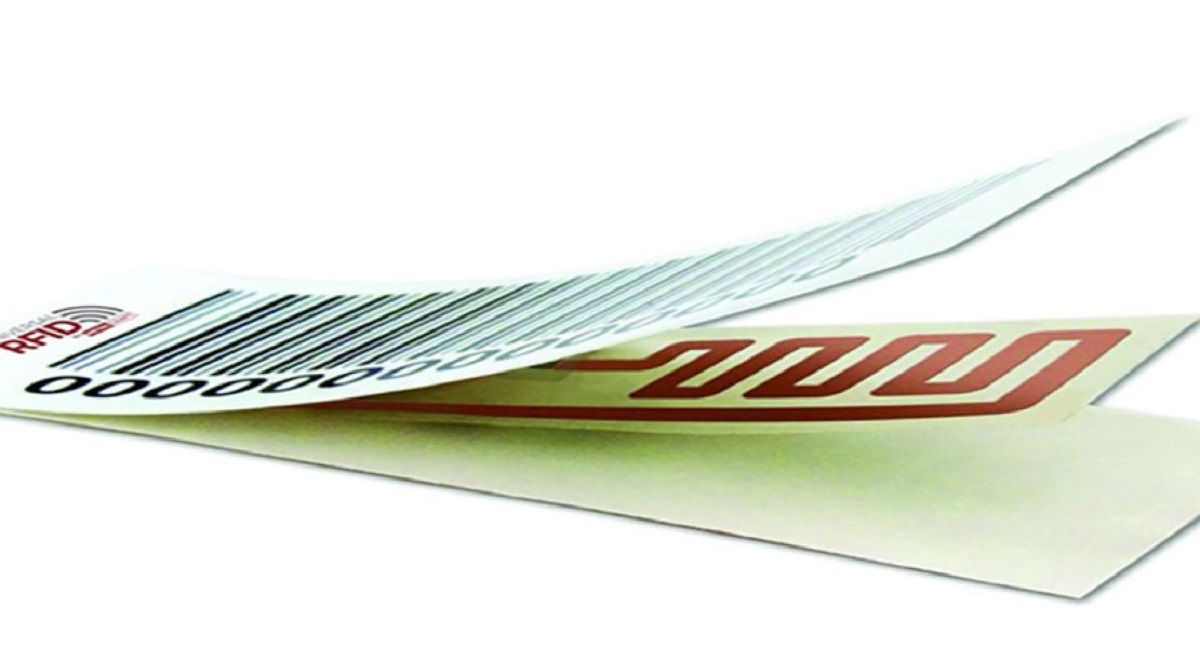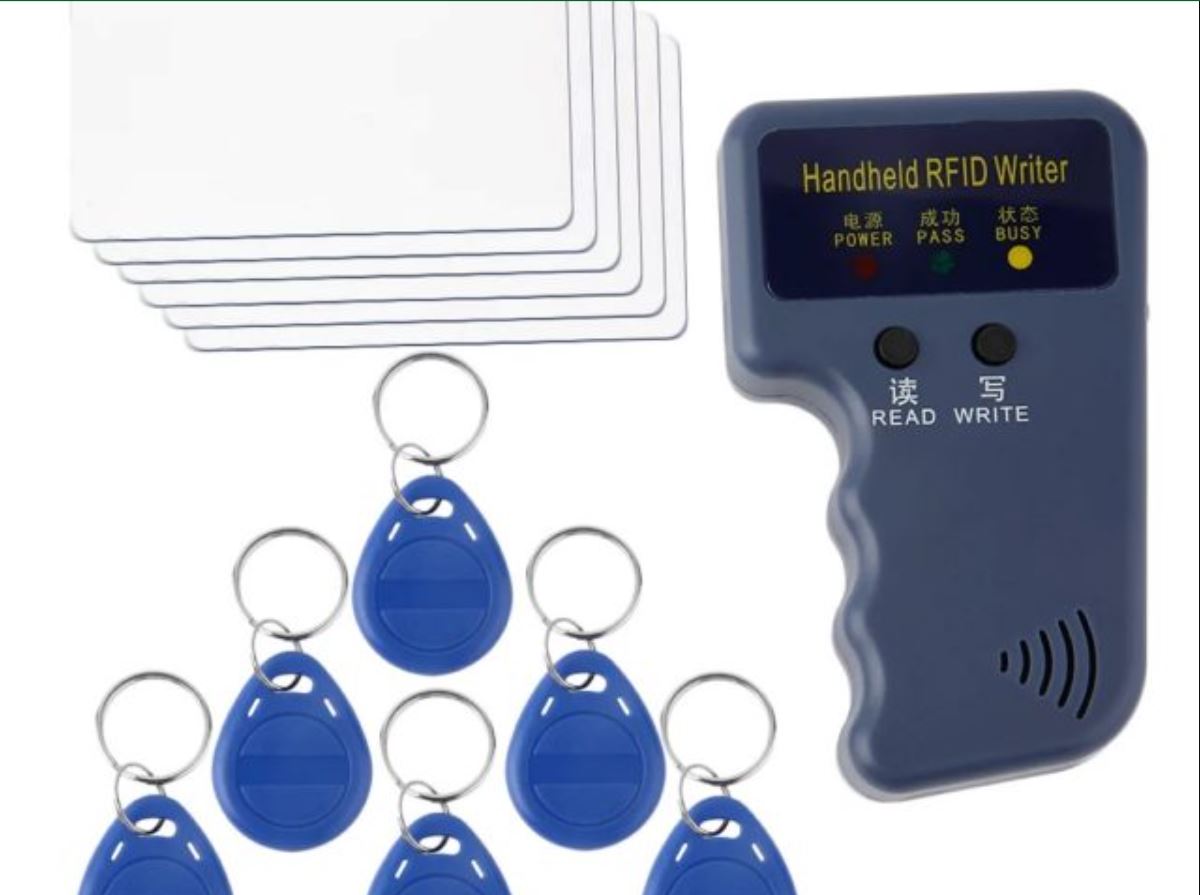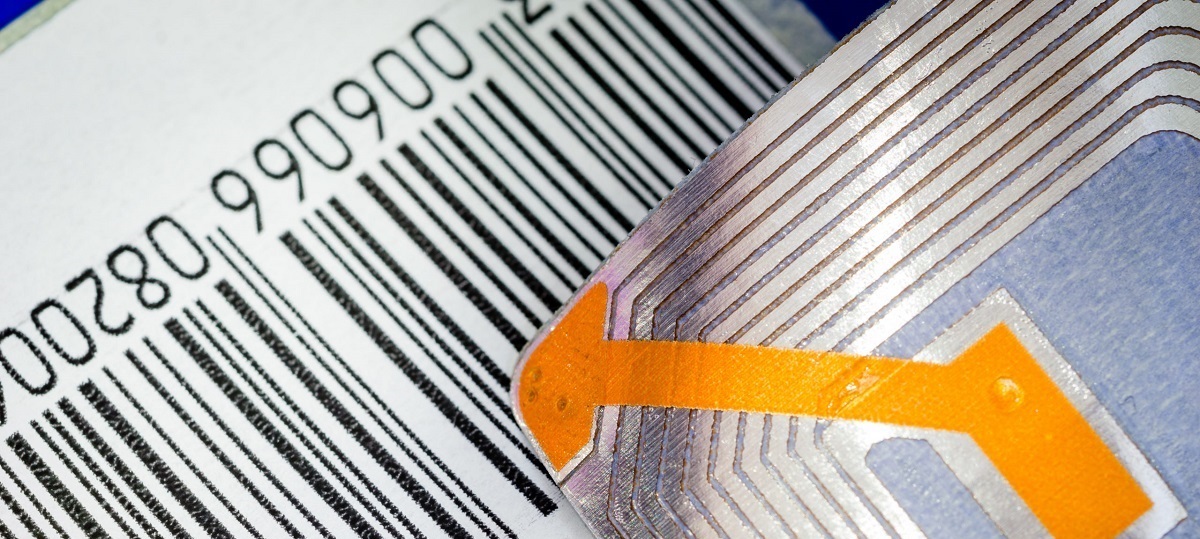Introduction
Radio Frequency Identification (RFID) technology has revolutionized various industries, enabling seamless tracking, identification, and data capturing processes. RFID tags are at the core of this technology, playing a crucial role in facilitating the exchange of information between objects and systems. Understanding the composition and functionality of RFID tags is essential for comprehending their widespread applications in different domains.
RFID tags are electronic devices that utilize radio waves to transmit and receive data wirelessly. They consist of a microchip and an antenna, which enables communication with an RFID reader. These tags can be attached or embedded in objects, allowing them to be identified and tracked efficiently. From inventory management to logistics to access control, RFID technology has become an integral part of many sectors.
In this article, we will explore the construction and materials used in RFID tags, delve into their functioning, discuss the different types available, and examine their advantages and disadvantages. Furthermore, we will look at the various applications of RFID tags and how they have transformed industries worldwide.
What is an RFID tag?
An RFID tag, also known as a transponder or a smart label, is a small device that uses radio frequency technology to store and transmit data. It acts as a unique identifier for an object or person, similar to a barcode, but with the added advantage of wireless communication. RFID tags consist of a microchip and an antenna, which are encapsulated in a protective material to withstand different environmental conditions.
The microchip in the RFID tag stores the unique identification number or other relevant information specific to the object it is attached to. This information can range from product details, expiration dates, manufacturing dates, serial numbers, or any other relevant data. The antenna, on the other hand, is responsible for transmitting and receiving radio frequency signals, allowing the tags to communicate with RFID readers.
RFID tags can be either passive or active. Passive tags do not have their own power source; instead, they rely on the electromagnetic energy transmitted by the RFID reader to power their operations. When the reader emits a radio frequency signal, the tag absorbs it and uses the energy to transmit its stored data back to the reader. This makes passive tags ideal for applications where the tags need to be small, lightweight, and have a longer operational life.
Active RFID tags, on the other hand, have their own built-in power source, typically a battery. This allows them to continuously broadcast their data and have a longer communication range compared to passive tags. Active tags are often used in applications where real-time tracking or monitoring is required, such as in asset tracking or vehicle identification systems.
Overall, RFID tags are playing a transformative role across industries, enabling automation, improving operational efficiency, and enhancing supply chain management. With their ability to uniquely identify and track objects wirelessly, RFID tags have become an indispensable tool in various sectors, providing valuable insights and enabling smarter decision-making processes.
How do RFID tags work?
RFID tags work based on the principles of radio frequency technology and electromagnetic fields. They rely on three main components: the RFID tag, the RFID reader, and the back-end system.
The process begins when the RFID reader emits a radio frequency signal, which creates an electromagnetic field in its vicinity. This field acts as the power source for passive RFID tags. When a passive tag enters the electromagnetic field, it absorbs the energy and activates its microchip. The microchip then modulates the energy to send back a response to the reader, which contains the unique identification number or other stored data.
In the case of active RFID tags, the tags continuously transmit their data using their built-in power source, allowing them to be identified by RFID readers within a certain range. The reader picks up the signals from the active tags and captures the transmitted data to be processed further.
Once the RFID reader receives the data from the tag, it sends it to the back-end system for processing. The back-end system is responsible for storing, analyzing, and utilizing the data received from the RFID tags. This data can be used for various purposes, such as inventory management, supply chain optimization, security, and access control.
RFID technology enables automatic and real-time identification of objects or individuals without requiring a direct line of sight between the reader and the tag. This feature makes it highly efficient and reliable for tracking and monitoring purposes. Additionally, RFID systems can handle multiple tags simultaneously, making them suitable for high-volume applications.
Overall, RFID tags work through the interaction between the reader and the tag, utilizing radio waves to power the tag and transmit data back to the reader. The ability to wirelessly identify and track objects or individuals has significantly enhanced various operations in industries such as retail, healthcare, transportation, and logistics, contributing to improved efficiency and productivity.
Components of an RFID tag
RFID tags consist of several key components that work together to facilitate their functionality. These components include the microchip, antenna, and protective material.
The microchip, also known as the Integrated Circuit (IC), is the brain of the RFID tag. It stores and processes the data that is transmitted and received by the tag. The microchip can hold various types of information, such as a unique identification number, product details, or other relevant data specific to the object or person it is attached to. The microchip is typically embedded in a substrate material and is connected to the antenna.
The antenna is responsible for transmitting and receiving radio frequency signals. It interacts with the electromagnetic field generated by the RFID reader, allowing the tag to communicate wirelessly. The antenna is usually a conductive coil or a printed circuit board (PCB) that is carefully designed to optimize the performance and range of the tag. The size and shape of the antenna can vary depending on the requirements of the application.
The protective material encases the microchip and antenna, safeguarding them from physical damage and environmental factors. This material serves as a barrier against moisture, dust, temperature variations, and other potential hazards. Typically, the protective material is made of materials such as plastic, epoxy resin, or silicone. The choice of material depends on the specific application and the level of durability and rigidity required.
In addition to these primary components, some RFID tags may also include additional features to enhance their functionality. For example, some tags may have a battery to power active tags or sensors to capture environmental data such as temperature or humidity. These additional components enable more advanced applications, such as cold chain monitoring or asset tracking in challenging environments.
The components of an RFID tag work in tandem to enable the tag’s effective functioning. The microchip stores the relevant data, the antenna facilitates wireless communication with the reader, and the protective material ensures the longevity and durability of the tag. These components come together to create a reliable and efficient tool for identification, tracking, and data capture in a wide range of industries and applications.
Material used in RFID tags
RFID tags are composed of various materials that serve different purposes in ensuring the functionality and durability of the tags. The selection of materials depends on the specific requirements of the application, including environmental conditions, read range, and cost considerations.
One of the key materials used in RFID tags is the substrate material that houses the microchip. This material provides support and protection to the delicate electronic components. Common substrate materials include ceramic, glass, and flexible materials like PET (polyethylene terephthalate) or paper. Ceramic and glass substrates provide excellent durability and resistance to heat and harsh environments, making them suitable for applications that require rugged tags. Flexible materials like PET and paper, on the other hand, are more cost-effective and allow for easy integration into various objects, such as labels or cards.
The conductive material used in the antenna plays a crucial role in the tag’s performance. Copper, aluminum, and silver are commonly used due to their excellent electrical conductivity. Copper provides high conductivity and can be easily etched onto a substrate or printed on a conductive material. Aluminum is cost-effective and suitable for applications where size is critical. Silver, although more expensive, offers superior conductivity and is often used in high-frequency RFID tags for enhanced performance.
The protective material that encases the microchip and antenna is typically made of plastic, epoxy resin, or silicone. Plastic, such as polycarbonate or ABS (Acrylonitrile Butadiene Styrene), offers durability, impact resistance, and flexibility. Epoxy resin provides a transparent and protective coating, safeguarding the components from moisture and physical damage. Silicone, known for its resistance to extreme temperatures and chemicals, is used in tags that require flexibility and resistance to harsh environments.
Adhesives are also an essential component in RFID tags, as they enable easy attachment to various surfaces. Pressure-sensitive adhesives (PSA), which are commonly used, ensure reliable bonding while allowing for easy application and removal, especially in labels and tags attached to products or assets.
It’s important to note that the materials used in RFID tags are continuously evolving to meet the demands of diverse applications. New advancements, such as printable electronics and nanomaterials, are being explored to create more efficient and cost-effective RFID tags with improved performance and sustainability.
By carefully selecting and combining these materials, RFID tags are designed to withstand environmental conditions, ensure reliable performance, and provide long-lasting functionality in a wide range of applications, including supply chain management, asset tracking, inventory control, and access control systems.
Types of RFID tags
RFID tags come in different forms and configurations, each designed to cater to specific requirements and applications. The two main categories of RFID tags are passive and active tags, each with its own set of characteristics and capabilities.
Passive RFID tags do not have their own power source and rely on the energy transmitted by the RFID reader to operate. These tags are cost-effective, lightweight, and have a longer operational life, making them ideal for applications such as inventory management and supply chain tracking. Passive RFID tags can be further classified into two subcategories: low-frequency (LF) and high-frequency (HF) tags. LF tags are known for their short read range, while HF tags offer improved data transfer speeds and are often used in applications that require a higher level of security, such as access control systems or electronic payment.
Active RFID tags, on the other hand, have their own built-in power source, typically a battery. These tags continuously transmit their unique identification and other stored data, enabling real-time tracking and monitoring of assets or individuals. Active tags have a longer communication range and can be used in applications such as asset tracking, vehicle identification, or personnel tracking in large facilities.
Another type of RFID tag is the semi-passive tag, which combines features of both passive and active tags. Semi-passive tags have their own power source for internal operations but rely on the RFID reader for communication. They offer longer battery life compared to active tags and are suitable for applications where power conservation and longer operational life are essential.
RFID tags can also be classified based on their form factors. They come in various shapes and sizes, including labels, cards, wristbands, key fobs, and even implantable tags. The choice of form factor depends on the intended use and the object or individual to be tagged.
Furthermore, RFID tags can be categorized based on their read range. Short-range tags are suitable for applications where close proximity reading is required, such as electronic toll collection or access control in buildings. Long-range tags, on the other hand, allow for reading distances of several meters or more and are used in applications such as vehicle tracking or inventory management in large warehouses.
The selection of the appropriate type of RFID tag depends on factors such as the required read range, power source, cost considerations, and environmental conditions. By understanding the different types of RFID tags available, businesses and organizations can choose the most suitable technology to optimize their operations and achieve their specific objectives.
Advantages and disadvantages of RFID tags
RFID tags offer numerous benefits that have made them a popular choice in various industries. However, like any technology, RFID tags also have their limitations. Let’s explore the advantages and disadvantages of using RFID tags in different applications.
Advantages:
- Efficiency: RFID tags enable quick and automated data capture, eliminating the need for manual scanning or line-of-sight reading. This boosts operational efficiency and reduces human error in processes such as inventory management and supply chain tracking.
- Accuracy: RFID technology provides a high level of accuracy in tracking and identification. Unlike barcodes, RFID tags can be read from a distance without the need for direct visibility, ensuring reliable and real-time data capture.
- Durability: RFID tags are designed to withstand various environmental conditions, including temperature changes, moisture, and physical stress. This durability makes them suitable for industries such as healthcare, logistics, and manufacturing, where resilience is essential.
- Scalability: RFID systems can handle a large number of tags simultaneously, making them ideal for applications that require high-volume tracking or inventory management. This scalability enables efficient operations even in large-scale environments.
- Data-rich: RFID tags have the capacity to store and transmit additional data, such as manufacturing details, expiration dates, or product specifications. This information can be utilized to improve supply chain transparency, enhance customer experience, and support decision-making processes.
Disadvantages:
- Cost: RFID tags can be more expensive compared to traditional barcode labels, especially when considering large-scale deployments. However, the cost has been decreasing steadily with advances in technology and increased adoption.
- Interference: RFID systems can experience interference from external factors like metal or liquids, which may affect the tag’s performance and read accuracy. Careful consideration of the tag placement and system configuration is necessary to minimize interference issues.
- Privacy concerns: RFID tags can raise privacy concerns due to their ability to track and capture data wirelessly. Proper security measures and data protection practices should be implemented to address privacy risks and ensure compliance with relevant regulations.
- Read range limitations: Depending on the type of tag, certain RFID systems may have limitations on the read range. This could affect applications that require long-range tracking or in environments with many obstructions.
Despite the limitations, the advantages of RFID tags in terms of efficiency, accuracy, durability, and data-rich capabilities make them a valuable technology in numerous industries. As the technology continues to evolve, addressing the disadvantages and exploring new possibilities, RFID tags are likely to become even more versatile and valuable in the future.
Applications of RFID tags
RFID technology has found diverse applications across multiple industries, revolutionizing processes and improving operational efficiency. Here are some notable applications of RFID tags:
- Supply Chain Management: RFID tags enable real-time tracking and visibility of goods throughout the supply chain. From warehouse management to inventory control to distribution, RFID tags streamline processes, minimize errors, and optimize logistics operations.
- Retail Industry: RFID tags are extensively used in retail for inventory management, theft prevention, and customer engagement. RFID-enabled systems provide accurate stock information, automate replenishment processes, and enhance the shopping experience with features like self-checkout and personalized promotions.
- Manufacturing: RFID tags play a crucial role in managing production processes, asset tracking, and quality control in manufacturing environments. They ensure accurate component tracking, assist in equipment maintenance, and enable traceability throughout the manufacturing cycle.
- Healthcare: RFID tags are utilized in healthcare for patient identification, medication management, and asset tracking. They improve patient safety, reduce medical errors, and enhance inventory management of medical supplies and equipment within hospitals and healthcare facilities.
- Logistics and Transportation: RFID tags enable efficient tracking and management of goods in transit, from shipping containers to individual parcels. They provide real-time visibility, enhance security, and simplify the supply chain processes involved in logistics and transportation.
- Access Control and Security: RFID tags are widely used for access control systems in buildings, parking lots, and events. They provide efficient identification, enhance security, and enable quick admission of authorized personnel or vehicles.
- Livestock Tracking: RFID tags are used to track and monitor livestock in agriculture and farming. They assist in managing animal health records, inventory management, and tracing the origin of food products, ensuring food safety and quality control.
- Waste Management: RFID tags help optimize waste collection and disposal processes. They enable automated bin identification, efficient route planning, and real-time monitoring of waste levels, improving operational efficiency and reducing environmental impact.
These are just a few examples of the many applications of RFID tags. As the technology continues to advance, new industries and sectors are constantly finding innovative ways to leverage the benefits of RFID technology, driving productivity, improving accuracy, and enhancing overall operational effectiveness.
Conclusion
RFID tags have become an indispensable technology in various industries, offering a wide range of applications and benefits. The ability to wirelessly identify, track, and capture data has revolutionized processes, improving efficiency, accuracy, and operational transparency. From supply chain management to retail, healthcare, logistics, and beyond, RFID tags have transformed the way businesses operate and interact with their assets and customers.
The components of an RFID tag, including the microchip, antenna, and protective material, work in harmony to enable seamless communication between the tag and RFID readers. The types of RFID tags, whether passive, active, or semi-passive, cater to different requirements and usage scenarios, providing scalability, real-time tracking, and enhanced visibility.
While RFID tags offer several benefits such as efficiency, accuracy, durability, and data-rich capabilities, they also have limitations. Concerns regarding privacy, cost, interference, and read range should be carefully addressed to ensure effective implementation and mitigate any associated risks.
The widespread adoption of RFID technology has transformed industries, providing valuable insights, improving supply chain management, optimizing processes, and enhancing customer satisfaction. As technology continues to advance, RFID tags are expected to become even more versatile, cost-effective, and sustainable, unlocking greater potential and enabling new applications.
In conclusion, RFID tags have proven to be a game-changer, enabling businesses and organizations to streamline operations, enhance security, and make data-driven decisions. With their ability to uniquely identify and track objects wirelessly, RFID tags have become an essential tool in the modern age, propelling industries into a new era of efficiency and connectivity.

























